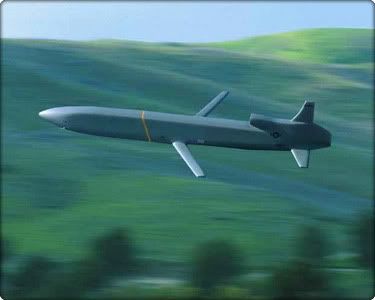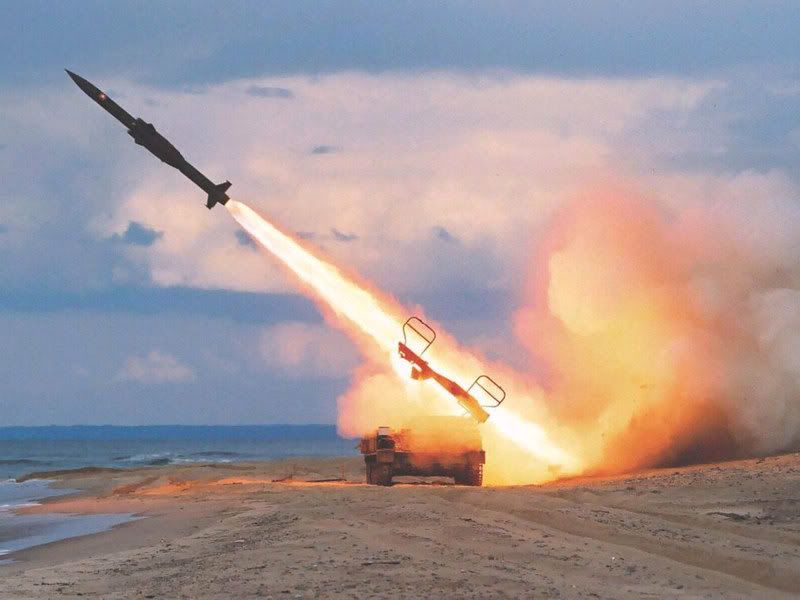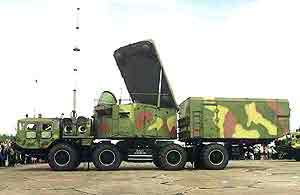Joint Air-and-Sea Defence plan (JASD)
A matter of heated discussion in military circles, the JASD was announced some time ago by the II Republic's military - however, concrete plans for deployment of necessary weapon systems have only began to surface recently. The New Military Journal decided thusly to take this opportunity and present the main points of the plan, currently under discussion by various LUN and FUNGAL AXIS military officers.
A) The ZAASM (Zorian Advanced Anti-Ship Missile)

Promotional image
The ZAASM has been purchased recently by Republican military, and after modifications is being used for training of first shore defence batteries.
The missiles are manufactured by the Royal Zorian Aeronautics corporation, and there are two variants in service: the ZAASM-1 and ZAASM-2.
Code: Select all
ZAASM-1 (Long-ranged supersonic missile) Tactical-technical data
Flight profile: sea-skimming
Maximum range: 300 km
Guidance: inertial, active radar, infrared, remote datalink
Cruise speed: mach 0.5
Terminal attack speed: mach 1.2
Warhead: 350kg
Code: Select all
ZAASM-2 (Short-ranged subsonic missile) Tactical-technical data
Flight profile: sea-skimming
Maximum range: 100 km
Guidance: inertial, active radar, infrared, remote datalink
Cruise speed: mach 0.5
Terminal attack speed: mach 0.8
Warhead: 350kg
B) Mobile ZAASM launcher

ZAASM launcher firing a modified ZAASM during excercise at North Point Army Proving Grounds
Based on a T-72 chassis, the "Rosomak" Mobile ASM Launcher System (MALS) is a treaded vehicle capable of rapid relocation and carrying two ZAASMs. It can move from transport to launch configuration in as little as 30 seconds with a competent crew.
These vehicles currently operate in batteries. A single battery consists of three launcher vehicles, a fuel and provisions transport and two supply vehicles carrying a total of eighteen additional missiles. A single supply vehicle can reload a single launcher in ten minutes, giving a total of half an hour between volleys.
Currently, two combat batteries and one training battery are operational in the Republic, however the system is not yet fully functional.
C) Command and control systems
JASD C&C systems are dispersed and capable of independent operation. Launch batteries are only given a rough operating area, and battery commanders and free to deploy as they see fit.
Various communication methods are used to report status and location of individual batteries: from ground-based phone landlines to sophisticated digital radios. At curent status, command and control is the biggest problem, with readiness estimated at only about 10% due to lack of funds for the required communication systems.
D) Doctrine
JASD concept makes several assumptions: one, that any potential invader will possess an overwhelming advantage in air and sea assets ; Two, that the enemy will be easily able to establish air superiority ; Three, that any potential enemy will require a mass of shipping to actually perform an invasion ; And four, that no nuclear weapons shall be used for fear of escalation (Former defense plans included use of nuclear artillery to defend beaches ; They were abandoned because of lack of nuclear infrastructure and fears of escalation).
Operating on these assumptions, any defence system will have to be: dispersed, to avoid complete destruction by air attacks ; able to operate independently ; capable of inflicting meaningful damage on the attacking forces ; and independent of the support of naval vessels and centralized supply dumps.
Thus, the JASD would be based on advanced missiles using mobile launchers and a dispersed command structure. A crucial capability would be the ability of any component of the system to receive targetting datafrom any other component and process them quickly. This way, stationary radars, submarines, UAVs, spotter data and other sources could be introduced into the system easily, and expand coverage.
Due to long range of Zorian AASMs, the system could cover the entire Central Sea if deployed in a large enough number of countries, and thus practically prevent any enemy from approaching the shores of LUN countries without dealing with all components of the system in all involved countries.
And if missiles are deployed in Shroomania as well, many narrow straits could be blocked in case of war. Even aircraft carriers would then operate in a high-threat environment throughout their cruise.
Furthermore, the dispersed nature of the system would mean that at no point short of a successful invasion and occupation could the attacker be sure he destroyed all launchers and targetting systems ; He would have to contend with the possiblity of losing a large number of invasion craft even after several months of air attacks.
The New Journal has acquired one proposed plan of AASM deployment, posted below.

Proposal for AASM deployment
As can be seen here, a properly organized AASM-based defence system would be a dangerous thing indeed. However, budgetary constrains currently prevent the Republic from quickly implementing the system, and readiness is estimated at about 10%. It is understood that military officials are currently negotiating various options with other countries, both of the LUN and the FUNGAL AXIS.
ABM system
It has come to our attention that the government has recently entered talks with the Red Technocracy concerning the feasibility of creating a joint ABM system. At this point, however, the Republic can at most provide land for bases and radars, as its military budget will not be capable of procuring the equipment itself.
However, Republican electronic engineers have shown some promise in specialized areas, like SPIRAL avionics. The government is ready to commit its electronic research infrastructure, small as it may be, to development of guidance systems for ABM interceptors.
Furthermore, Shroomania's railgun system may be of use in the proposed scheme. Republican military specialists feel, however, that a two-tiered system may offer the best protection: railguns for long-range defence and missiles for last-ditch protection.


 "
"


